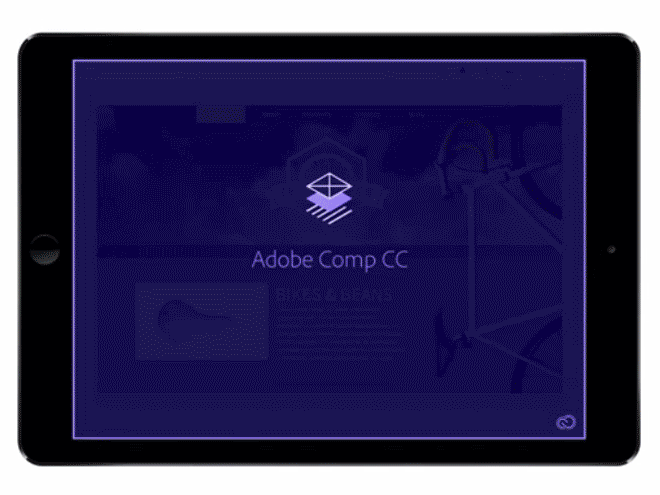For some time now, the iPad has struggled to gain meaningful traction with users. Heralded in 2010 as the Goldilocks just-right device for tasks like checking email, browsing online, and playing games, that was no longer the case just a few years later. Today we have much bigger smartphones, featherlight laptops, and a flimsy understanding of how to best put our midsize tablets to use.
Apple's latest addition to the iPad lineup, the iPad Pro, aims to resolve this confusion. It's a bigger, more powerful tablet that Apple Senior VP Phil Schiller demoed onstage with some of Adobe's new apps. It was a particularly fitting way to introduce a device meant for work, because Adobe has, for more than a year now, been pushing for professional creativity on mobile devices.
CreativeSync, a new Adobe technology, is the company's latest bid to make that happen.
CreativeSync runs in the background of Adobe’s cloud and is like a seamless, 360-degree bridge linking all of Adobe’s apps (third party apps get access soon). If you’re editing an image in Photoshop, but need to quickly add text in InDesign, then bounce the file back to Photoshop, CreativeSync lets you do this with a couple of quick taps. The goal, plain and simple, is to turn mobile platforms into a places you can actually do work.
That goal, so far, has been elusive. Sure, Adobe's apps are all mobile, and other products like Paper by 53 are beautiful, and have devoted users and staunch advocates. But as a tool designed for a start-to-finish creative process, the iPad hasn’t taken off. “There’s basically no professional creativity being done on mobile,” says Scott Belsky, Adobe VP. When Adobe investigated the matter last year, it found a likely explanation: File creation and file saving hinged entirely on the camera roll. "You had these isolated, siloed, mobile apps that all promised their own thing,” Belsky says. “But when you would use them, in the end you had to save it to your camera roll. That is a total break in the whole nature of digital creativity as we know it," which relies on projects working together.
CreativeSync eradicates that problem by letting designers toggle between apps in seconds and, crucially, by auto-saving files to the cloud so collaborators can jump in as soon as changes go through. That interaction could prove useful for coaxing designers away from analog tools like pen and paper—a tried-and-true brainstorming method that proved popular in a survey recently done by Khoi Vinh, a principal designer at Adobe, recently conducted. One reason designers cite for using paper and pen is that it’s ephemeral, and thus more easily shared. A design team can gather around sheets of paper and arrange them at will; with CreativeSync as the connective tissue behind mobile creativity apps, Belsky and Vinh hope to foster such interactions.
This is all part of an evolutionary process happening at Adobe. “We’re punching out the major obstacles" —to mobile-enabled creativity— "one by one," Belsky says. Fonts was a big one for them; when Typekit integrated into Adobe mobile apps it made work easier for designers. Now, with CreativeSync, they’re aiming at mobile to mobile connection. Vinh says that’s expected to keep progressing, hopefully alongside Apple’s tech upgrades. "As we keep knocking down these barriers," he says, "new input methods like apple’s 3-D touch will open up ways to make designing mobile more efficient, and a more elegant process than it has been."
